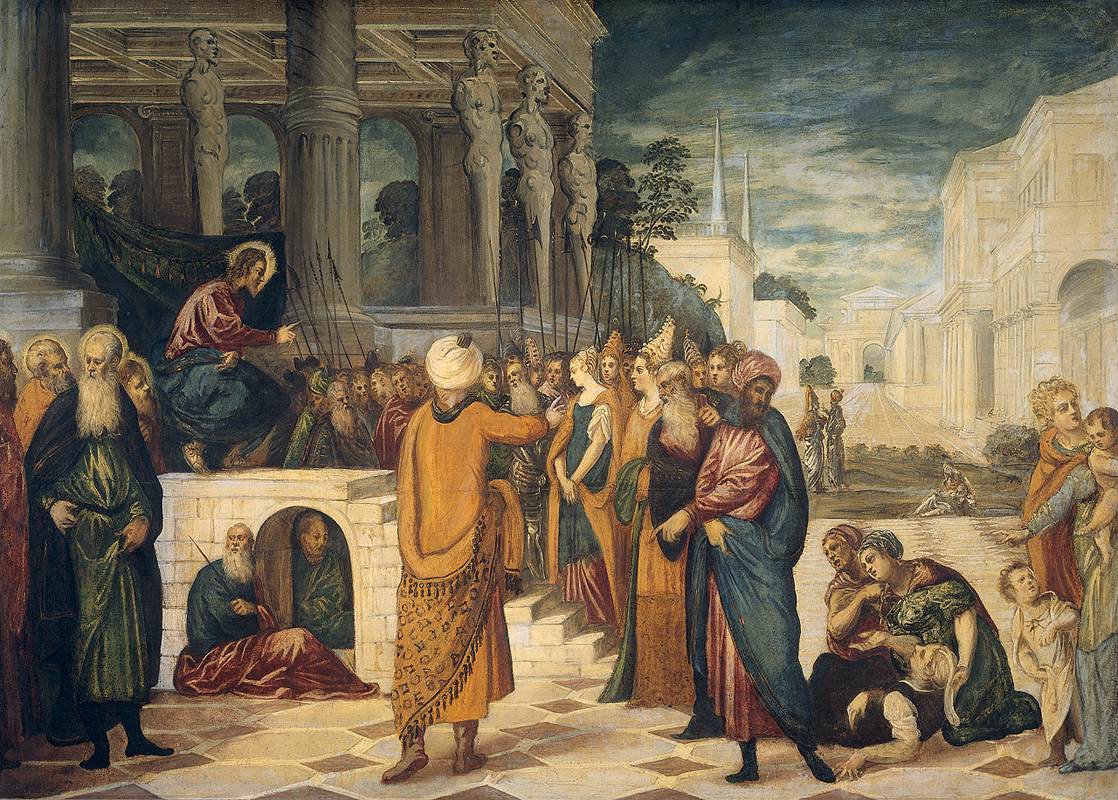Description
The painting "Christ and the Adulteress" by the artist Tintoretto is a fascinating work that shows his artistic genius in various aspects. Tintoretto, whose real name was Jacopo Comin, was one of the masters of the Italian Renaissance, and his unique style is highlighted in this particular work.
Regarding the artistic style, Tintoretto was characterized by his dramatic and emotional approach. In "Christ and the Adulteress", this characteristic becomes evident in the way he portrays the characters. The expressive faces and dynamic postures of the characters convey the tension and intensity of the moment.
The composition of the painting is also remarkable. Tintoretto uses a diagonal composition to guide the viewer's gaze through the scene. The central character of Christ is in the center of the composition, surrounded by the accusers and the adulterous woman. This arrangement creates a visual and symbolic contrast between the figure of Christ, who radiates light and goodness, and the dark and threatening characters that surround him.
In terms of colour, Tintoretto uses a rich and vibrant palette. Warm, earthy tones dominate the painting, creating a feeling of warmth and closeness. The contrast between the dark colors of the accusers and the adulterous woman and the luminous brightness of Christ also reinforces the moral and religious message of the work.
The story of "Christ and the Adulteress" is based on a biblical passage from the Gospel of John. In this story, Christ is confronted by a crowd that is about to stone an adulterous woman. Christ challenges the accusers and tells them that those without sin must cast the first stone. The painting captures this critical moment in the biblical narrative and conveys Christ's message of mercy and forgiveness.
Although "Christ and the Adulteress" is a well-known work, there are lesser-known aspects of it. For example, the painting was originally part of a set of works commissioned to decorate the Sala del Maggior Consiglio in the Doge's Palace in Venice. However, due to its size, it was considered too large and was moved to the Church of San Giovanni Elemosinario in Venice, where it is currently located.
In conclusion, Tintoretto's "Christ and the Adulteress" is an impressive painting that stands out for its artistic style, composition, color, and moral message. Tintoretto's ability to capture the emotion and tension of the moment, as well as his masterful use of color and composition, make this work a gem of the Italian Renaissance.

